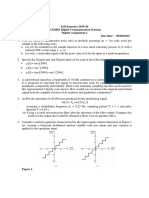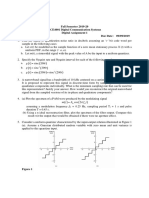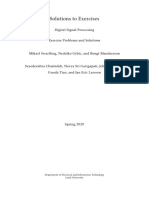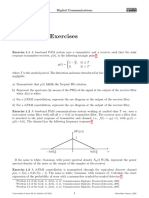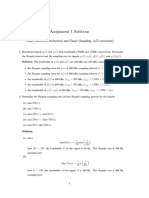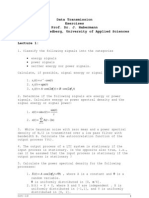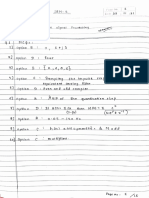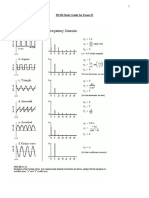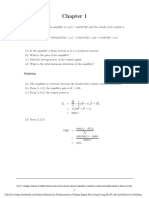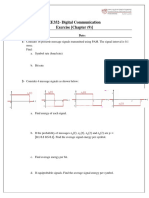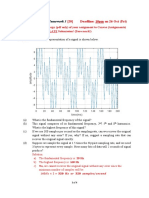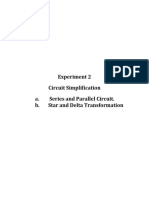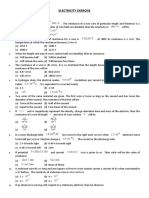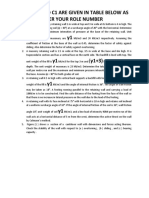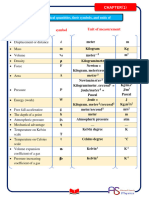0% found this document useful (0 votes)
63 views1 pageTD1 Sampling Correction
1. The document discusses digital signal processing and sampling theory. It includes exercises on sampling frequency, the discrete Fourier transform, and signal quantization.
2. One exercise calculates that a minimum sampling frequency of 44 kHz is needed to digitize an audio signal with maximum frequency of 22 kHz. At this rate, 70 minutes of two microphone audio would be 739.2 megabytes in size.
3. Another exercise discusses the mean, variance, and signal-to-quantization noise ratio of a signal after analog to digital conversion, showing how the noise ratio improves by 6.02 dB for each additional bit of quantization.
Uploaded by
Gabriel BlanchetCopyright
© © All Rights Reserved
We take content rights seriously. If you suspect this is your content, claim it here.
Available Formats
Download as PDF, TXT or read online on Scribd
0% found this document useful (0 votes)
63 views1 pageTD1 Sampling Correction
1. The document discusses digital signal processing and sampling theory. It includes exercises on sampling frequency, the discrete Fourier transform, and signal quantization.
2. One exercise calculates that a minimum sampling frequency of 44 kHz is needed to digitize an audio signal with maximum frequency of 22 kHz. At this rate, 70 minutes of two microphone audio would be 739.2 megabytes in size.
3. Another exercise discusses the mean, variance, and signal-to-quantization noise ratio of a signal after analog to digital conversion, showing how the noise ratio improves by 6.02 dB for each additional bit of quantization.
Uploaded by
Gabriel BlanchetCopyright
© © All Rights Reserved
We take content rights seriously. If you suspect this is your content, claim it here.
Available Formats
Download as PDF, TXT or read online on Scribd
/ 1



